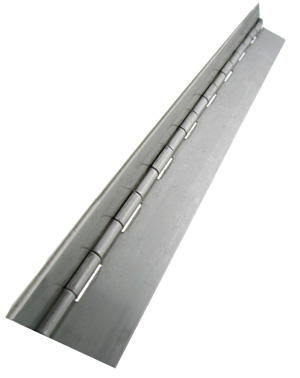
Hinges offer a simple but effective way to connect two objects while allowing for a fixed axis of rotation. They are a type of mechanical bearing consisting of several parts, such as two leafs and a pin. Some hinges, however, are longer than others. Continuous hinges, in fact, are defined by their long length. They are used for the same purposes as traditional hinges, but they are often two to four times longer than their counterparts.
What Is a Continuous Hinge?
Also known as a piano hinge, a continuous hinge is a type of mechanical bearing that’s designed to run the entire length of the surfaces on which it’s installed. They are often found on pianos, hence their alternative name. Pianos, for example, usually have a lid that’s connected with a continuous hinge. This long mechanical bearing runs the entire length of the lid. As a result, the lid and the piano itself are exposed to less physical stress.
How Continuous Hinges Work
Continuous hinges work like all other hinges. They feature two leafs that are joined together by a pin. The joined middle section of a continuous hinge is known as the knuckle. After installing a continuous hinge on two objects, you can pull one of the objects open or away from the other.
What’s the point of using a continuous hinge exactly? Since it runs the entire length of the surfaces on which it’s installed, it offers greater strength and stability than other types of hinges. Other types of hinges may only cover a fraction of the surfaces’ length. Therefore, they don’t offer as much as strength and stability.
Of course, continuous hinges are just one of many types of hinges. Other common types of hinges include the following:
- Bi-fold
- Butt
- Case
- Concealed
- Flag
- Gate
- Latch
- Overlay
- Panel box
- Strap
- Weld-on
In Conclusion
Continuous hinges are simply long hinges that are designed to run the entire length of the surfaces on which they are installed. You can find them in many of the same materials as traditional hinges, including stainless steel, carbon steel, brass and more. Continous hinges have two leafs and a pin, which form a knuckle in the center. With that said, all continuous hinges are longer than traditional hinges because they run the entire of the surfaces on which they are installed.
